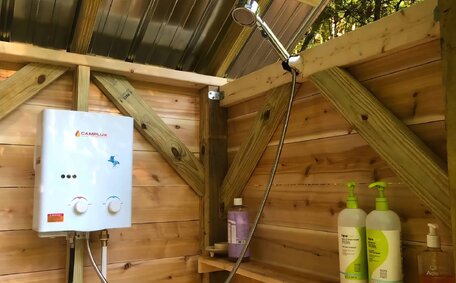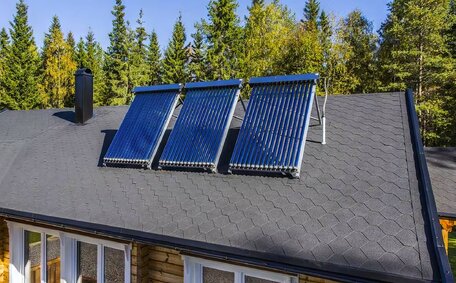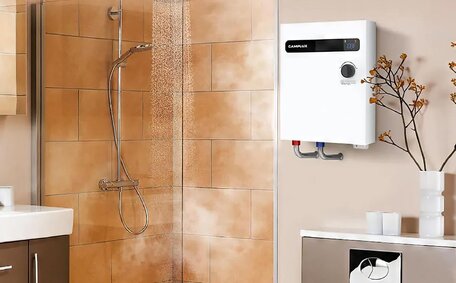Introduction to Pipe Relining as an Eco-Friendly Alternative
Pipe relining, a form of trenchless pipe lining, offers a sustainable alternative for repairing sewer and drainage pipes while preserving your landscape. Pipe relining, an eco-friendly solution, renews old pipes internally using a seamless epoxy resin lining, eliminating the need for costly and disruptive traditional excavation.
In contrast with trench-digging for pipe replacement, pipe relining uses existing infrastructure, offering environmental advantages through trenchless technology. The relining process produces significantly less carbon by utilising fewer raw materials, thereby reducing the carbon footprint. As excavation is unnecessary, pipe relining prevents disturbances to landscaping and pavements, mitigating property damage and contamination risks.
Pipe relining is an environmentally responsible method that prolongs the life of your plumbing system. Without the need for excavation, pipe relining is the more environmentally friendly option over traditional replacement for underground infrastructure.
How Pipe Relining Prevents Environmental Disruption from Excavation
One of the biggest benefits pipe relining offers environmentally is that it eliminates the need for extensive excavation. Traditional methods such as pipe bursting require digging trenches to access broken pipes, often resulting in torn-up pavements, landscaping, and gardens.
Pipe relining minimises environmental risks associated with trenchless solutions, such as open trenches that could lead to contamination.
Conversely, pipe relining employs epoxy resin and trenchless technology to rehabilitate pipes internally. After a pipe inspection, a structural epoxy resin lining is inserted and then cured to form a smooth, watertight seal, all without need for excavation. Pipe relining’s internal access circumvents the need for excavation, thus preserving the environmental integrity.
Ultimately, trenchless repair solutions like pipe relining minimise harm to existing landscaping, infrastructure and ecology by avoiding widespread trench-digging. Trenchless solutions like pipe relining ensure even tree roots remain undisturbed during drain cleaning and resolving plumbing issues, thus protecting the natural terrain.
Lowering Carbon Emissions
The modern plumbing industry is sharpening its focus on sustainability and minimising environmental impact through innovative methods like technology pipe relining. Traditional pipe replacement methods have a sizable carbon footprint due to the extensive works involved in repairing your sewer line, heavy machinery use, and material waste.
Modern pipe relining significantly reduces carbon emissions compared to traditional pipe renewal methods. Minimal equipment is needed, specifically epoxy resin and relining tools suitable for various pipe repairs. Pipe relining curbs carbon emissions by repairing instead of replacing damaged pipes, thus avoiding the production of new piping systems.
Statistics indicate pipe relining can reduce carbon emissions by over 90% versus traditional repairs. As communities target reduced carbon footprints, energy-efficient buildings, and environmentally friendly infrastructure, Pipe relining, replacing old methodologies with innovative techniques, stands out as one of the optimal sewer solutions.
Pipe relining offers lower carbon emissions and eliminates disruptive excavation, making it a sustainable choice that safeguards your property and the environment. As leaders in trenchless repairs, Cranebrook Plumbing utilises these green methods to fix plumbing issues while keeping carbon impacts to a minimum across Cranebrook, Sydney.
Preserving Landscapes and Gardens
Pipe relining also helps support the initiative to go green, as it is a trenchless technology that minimises impact environment by eliminating the need for disruptive excavation works. Traditional pipe replacement often requires extensive excavation which can devastate landscaped areas.
Traditional trenching damages lawns and can necessitate removing trees, garden beds, and pavement. Trenching disrupts soil stability, drainage, and tree root networks, with potential adverse effects on your garden. It may also result in damage to paving stones, retaining walls, and other landscape features.
In contrast, pipe relining renews drainage pipes from the inside out, without external access. After inspection, a sturdy epoxy resin lining is inserted into pipes to seal cracks and leaks. With no excavation needed, the surrounding garden areas remain fully intact.
For homeowners in Cranebrook, Sydney, pipe relining allows for repairing your plumbing without harming lawns, gardens or the natural ecology. Trenchless techniques fix pipe issues minus the mess and destruction of digging, preserving precious outdoor spaces.
Advanced and Sustainable Materials Used in Pipe Relining
Pipe relining employs durable and sustainable epoxy and advanced composite materials. Epoxy resins produce highly durable pipes known for their strength, chemical resistance, and extended lifespan.
Epoxy resin, once hardened, provides a stable, robust barrier within pipes, enhancing structural integrity. With a lifespan over 50 years, epoxy resin linings eliminate the need for recurrent repairs or future pipe replacements.
The production of epoxy resins for pipe relining has a smaller carbon footprint than manufacturing new pipes. Materials used in pipe relining cut down repair and replacement processes, preserving resources, minimising waste, and reducing environmental impact.
Overall, the composite materials used make pipe relining a sustainable and ecologically sound repair approach. This process extends the life of pipes while safeguarding property and infrastructure for the future.
Long-Term Durability of Relined Pipes
One of the biggest long-term benefits of pipe relining is the exceptional durability and longevity of relined pipes. Pipe relining employs advanced composite materials such as epoxy resins, which can significantly prolong pipe lifespan beyond 50 years.
The remarkable durability provided by pipe relining transforms old pipes, significantly reducing the need for frequent maintenance or replacements. Relined pipes maintain structural integrity and enhance flow capacity over time.
Such longevity leads to tremendous sustainability advantages as well, conserving resources over time. The rarity of necessary replacements with relined pipes decreases construction waste and environmental harm. Pipe relining preserves pipes, avoids disruption, and eliminates future repair costs.
Truly, pipe relining offers a long-lasting, eco-friendly plumbing solution. Home and business owners can gain peace of mind knowing their pipe systems have been non-invasively restored to optimally perform for over half a century. Pipe relining refurbishes pipes for longevity, negating the need for immediate replacement.
Trenchless Pipe Relining Techniques for Efficiency
Benefiting from trenchless technology, pipe relining utilises advanced techniques that enable efficient repairs without excavation. Trenchless relining techniques are faster, more cost-effective, and less disruptive than traditional pipe repairs.
Instead of digging to access pipes, trenchless relining relies on a cctv inspection to assess pipe damage. Tiny cameras assess the pipe’s interior, pinpointing issues accurately and enabling precise repair targeting.
Following inspection, specialists use the CIPP relining process to place a flexible lining within pipes, generating a smooth internal surface. These durable epoxy barriers adhere seamlessly, sealing cracks and gaps. As the material cures, it forms a smooth, watertight new pipe wall inside the damaged one.
Trenchless relining necessitates less labour, equipment, and materials than traditional pipe replacement. By preserving pipes in-place, it also reduces carbon emissions from heavy machinery and waste. The efficiency of modern pipe relining makes it the superior choice for sustainable pipe restoration.
With our cutting-edge relining solutions, Cranebrook Plumbing provides efficient and ecologically responsible pipe repairs. We renew drainage systems with precision, conserving much more than just time and money; we’re also conserving environmental resources across Cranebrook, Sydney.
Pipe Relining as a Modern, Eco-Friendly Plumbing Solution
Pipe relining has emerged as an innovative, eco-friendly plumbing solution that can help offer considerable environmental benefits over than traditional pipe repair methods. By using innovative trenchless technology to renew drainage and sewer pipe systems from within, pipe relining preserves existing infrastructure whilst circumventing the disruptive excavation work inherent in traditional repair.
Cranebrook Plumbing stands at the forefront with pipe relining techniques that align with environmental sustainability. The seamless epoxy resin linings used to reline pipes are extremely durable and have a minimal carbon footprint. With a longevity exceeding 50 years, relined pipes diminish the need for recurrent repairs and replacement, providing benefits every year over time.
Most importantly, pipe relining enables critical plumbing restoration without harming landscapes, gardens, or ecology. It reduces the risks that can contaminate soil and the property damage often linked to extensive trench-digging. Ultimately, Cranebrook Plumbing’s trenchless methods uphold efficiency and environmental responsibility when tackling pipe issues across Cranebrook, Sydney.
Pipe relining is the prime choice for homeowners and businesses looking for sustainable pipe repair solutions – learn how it can rejuvenate your plumbing by reaching out to us today.






